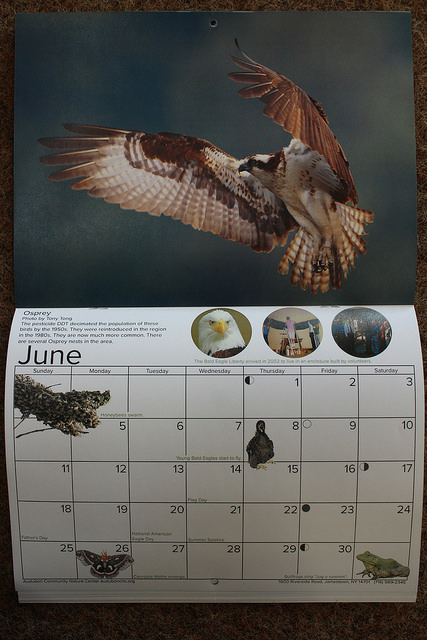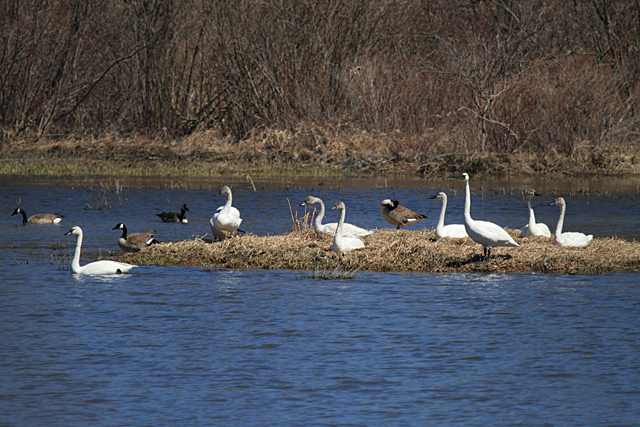What marks the first day of winter? Is it the first snowfall or the winter solstice, which marks the longest night of the year in late December and is the official start of winter? For me, it’s the first snow, a date that is much less predictable. Many other things in nature are far easier to forecast than snow.
When will the first Tundra Swan arrive? This date has been tracked and marked for decades. They arrive in mid- to late-November each year. When will the goldfinches lose their yellow colors and turn olive drab for the winter? It happens around the same time in October each year. The rhythms of plants and animals remains roughly the same from year to year, with the weather only slightly affecting the times.
Each year, I put together a natural history calendar for the Audubon Community Nature Center. It features things to find in nature each and every month. It mentions when to find wildflowers, when different birds migrate and what time of year to see baby Ospreys in the nest. The calendar contains all the usual holidays, but the natural history knowledge provides something to go out and search for each month.
The Jamestown Audubon Society will be celebrating 60 years of serving the community in 2017. The calendar honors those years by looking at how much has changed since 1957. The howls and yips of Eastern Coyotes have become common in the forest. River Otters were reintroduced and now frolic in local waterways. Some ducks, such as the Northern Shoveler, have quadrupled their population.

Each page of the natural history calendar has dates of natural happenings, holidays and other information about the world.
At the same time that there have been many improvements for wildlife, some things have been devastated. Big Pond was covered with Water Chestnut, which has changed the entire dynamic of the pond. The Multiflora Rose that was so diligently planted as erosion control in the 1970s has now taken over chunks of the property. The Rusty Blackbird, a bird that migrates through our area each year, has had up to 99% of its population disappear. No one knows why.
Beautiful photography of these plants and animals make up the main photos of the calendar. The rest is devoted to photos from the last sixty years. Audubon has been very active for years. Staff and volunteers have worked with students in schools and at the nature center for decades. The Nature Center has been a place for people to learn, volunteer and hike for a very long time.
I had a great time looking through old photos. There are photos of ladies in horn-rimmed glasses from the 1950s putting together mailings to members. There are photos of the original nature center from the 1970s and of the addition in the 1990s. There are pictures of volunteers dedicating Spatterdock Bridge in the 1980s when it was brand new.
I started working at Audubon just before the fortieth anniversary. Over the last 20 years, much has changed. Programs have changed. The exhibits have changed. The trails have improved. The staff and volunteers have changed. One thing has remained the same. Audubon continues to strive for improvement and a dedicated group of volunteers help out at every level to make that happen.
This calendar is for those who have donated their time and efforts to make the Audubon Community Nature Center amazing and who want to continue to discover more about what is happening outside. The calendar is available online or in the Blue Heron Gift Shop.



Recent Comments